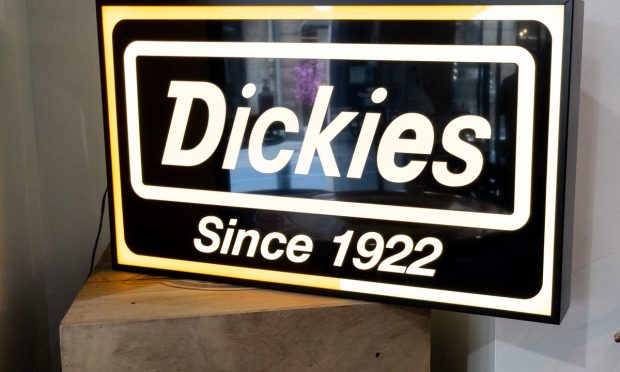VF’s Dickies Brand Boosts Conversions, Slashes Returns With Virtual Fitting

Less than a year into an artificial intelligence (AI)-driven virtual fitting program, VF Corp. is seeing a surge in customer buying and satisfaction as well as a reduction in returns.
This, according to a client case study published this month by California-based 3DLOOK, which teamed up with VF last May to help custom fit its Dickies apparel brand for young, digitally active Chinese consumers using Alibaba’s Tmall platform.
Although Denver-based VF has been in business for 120 years, the venture marked the first time it has used AI on any of its brands and it appears the teamwork is paying off.
“The pandemic only accelerated our need to use digital technologies to become more agile and responsive to consumers’ demands and fit recommendation was one of the top opportunities we identified,” Adela Tan, VF Asia Pacific vice President and managing director, Dickies, said in a statement that outlined the results.
Specifically, after just nine months, VF has seen gains in several key retail metrics, but most notably a 94% increase in conversions since it implemented the program in May 2021. At the same time, the case study showed that customer satisfaction was up and its so-called Net Promoter Score — a popular industry metric used to gauge customer experience programs — was also higher.
Customers Want More
Officially, Dickies reported that 87% of customers said 3DLook’s digital fitting tool had improved the shopping experience and that they would like to see the size and fit recommendations software added to more products.
Whitney Cathcart, co-founder and chief strategy officer at 3DLOOK, told PYMNTS there are several things VF is doing with the technology, including finding new ways to cut back on returns, and to track them better, while developing new insights as the AI in the system grows while absorbing data and shopping trends unique to each retailers’ customers.
“Obviously we want to look at return rates and that will take a little bit longer, because every brand has a different return policy,” Cathcart said, noting that consumer habits change depending on variables like whether returns are free or not.
According to a PYMNTS study, 89% of consumers made at least one online purchase during the holiday season. However, 56% of holiday shoppers believe they may have to return a purchase because of a mistake in size, color or style.
Other PYMNTS research has shown that online retailers may need to tailor the eCommerce shopping experience to meet consumers’ preferences, as the study found that the majority of customers consider ease of purchase and excellent customer experience while shopping to be among their most important criteria.
How it works
To use the 3DLOOK program, shoppers on Dickies Tmall store select a product and let a voice guide them through a quick photo flow. From just two photos, from front and side, the program obtains more than 80 measurement points using a combination of computer vision and 3D statistical modeling. It then compares that with product data to determine the best size and fit for the customer’s body.
Cathcart said consumers will get the correct size but aren’t given their specific measurements.
“What we’ve learned is that consumers don’t want to know their measurements because they also often have a different vision of their size than what they really are,” she said. “We certainly have all that data, but what we’re giving to the consumer is a better shopping experience around fit. So, it’s really around removing the complexity.”
Cathcart said clothing manufacturers each have a different version of sizes; a person may be one size in one brand but could be considered bigger or smaller in another.
“So, unless you really kind of understand how the apparel industry works, those size charts often result in higher return rates because consumers don’t know how to read them,” Cathcart said.
Beside VF, she said 3DLOOK technology is currently being used by 70 different brands, including uniform makers Unisync and Fechheimer Brothers, as well as 1822 Denim and Mive.
The AI Fitting Trend
To be sure VF and 3Dlook are not alone in their pursuit of ways to use technology to mitigate long-standing retail industry problems that are worsening alongside the general growth and uptake of digital commerce.
Last May, for example, Walmart announced it purchased Israeli virtual try-on firm Zeekit to help boost its appeal to customers by making it easy and fun to visual different outfits via an AI fashion app.
“Virtual try-on is a game-changer, and solves what has historically been one of the most difficult things to replicate online: understanding fit and how an item will actually look on you,” said Denise Incandela, EVP of apparel and private brands at Walmart U.S, calling Zeekit and its fitting tool a key part of the retailer’s plan to deliver an “inclusive, immersive and personalized experience” for it diverse customer base.
Meanwhile, Amazon is launching an interactive physical store that will enable people to shop digitally, try on their selections, and also be given other suggested items to look at based on their history and user algorithms, Simoina Vasen, managing director of Amazon Style, said in a blog post on Jan. 20. The first location is expected to open later this year in the Glendale area of Los Angeles at The Americana at Brand, a shopping, dining and entertainment center.
